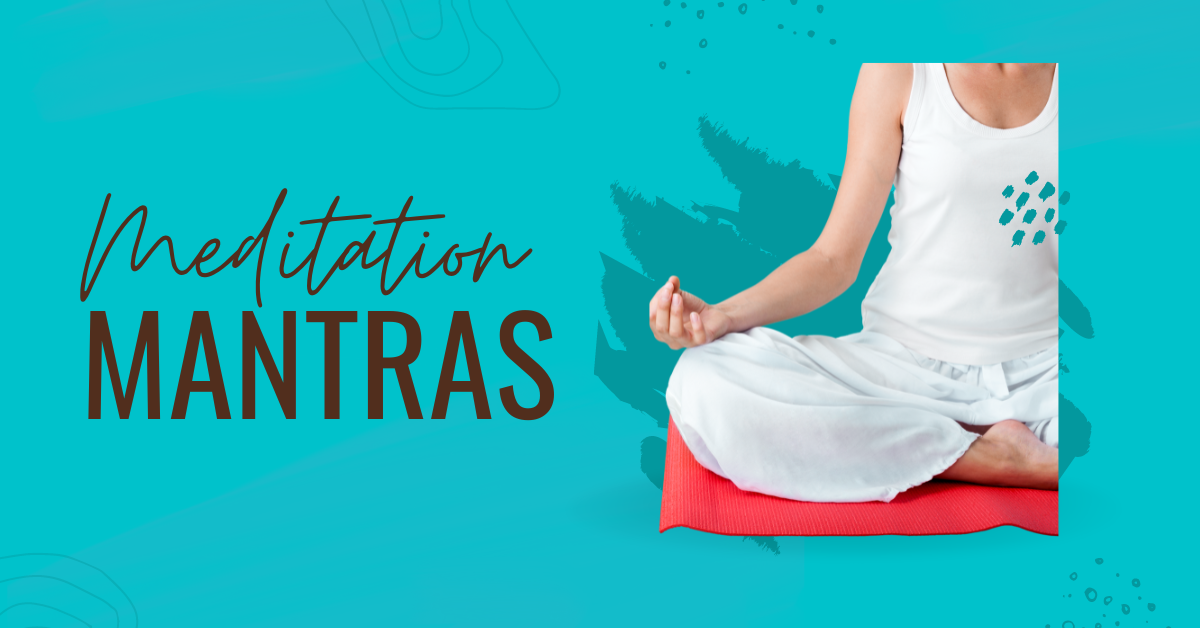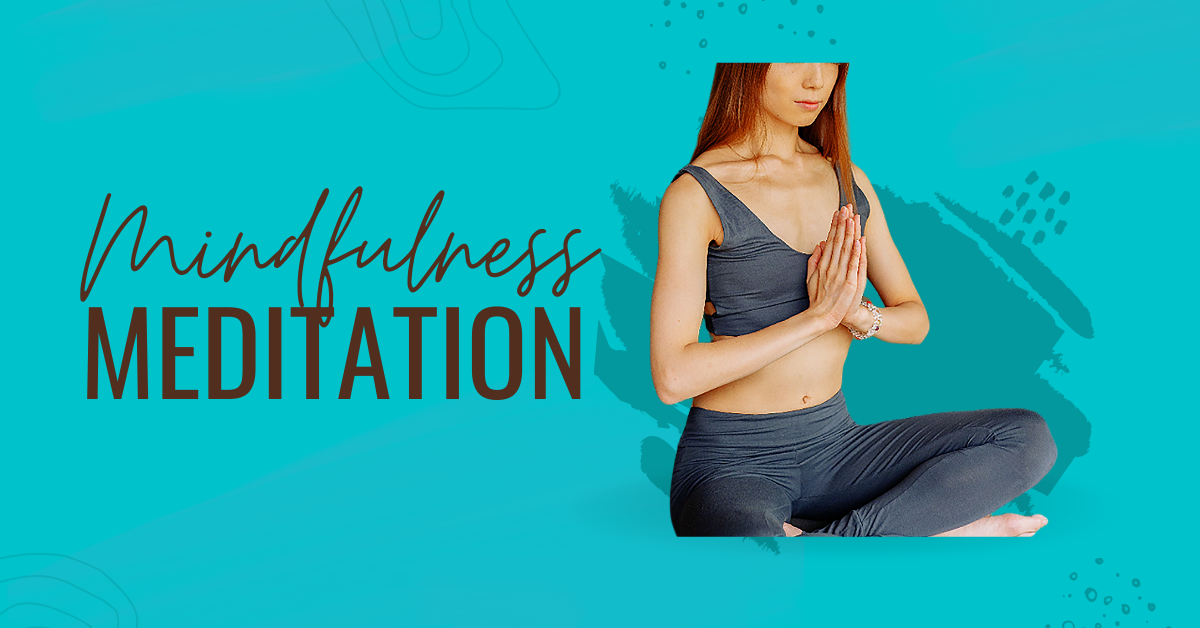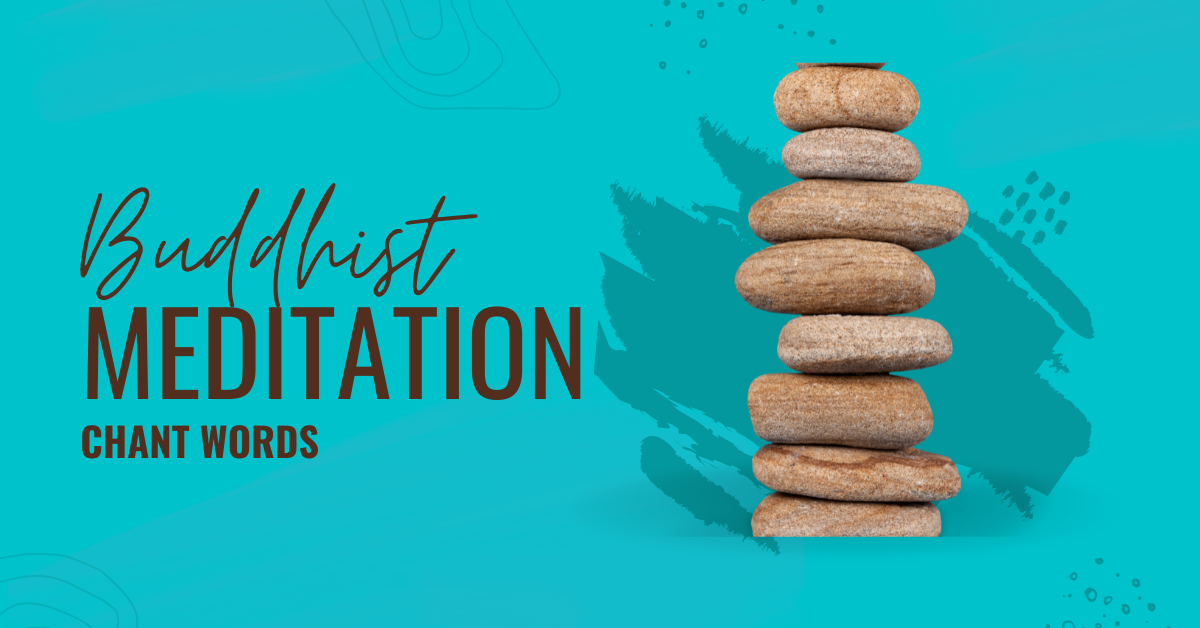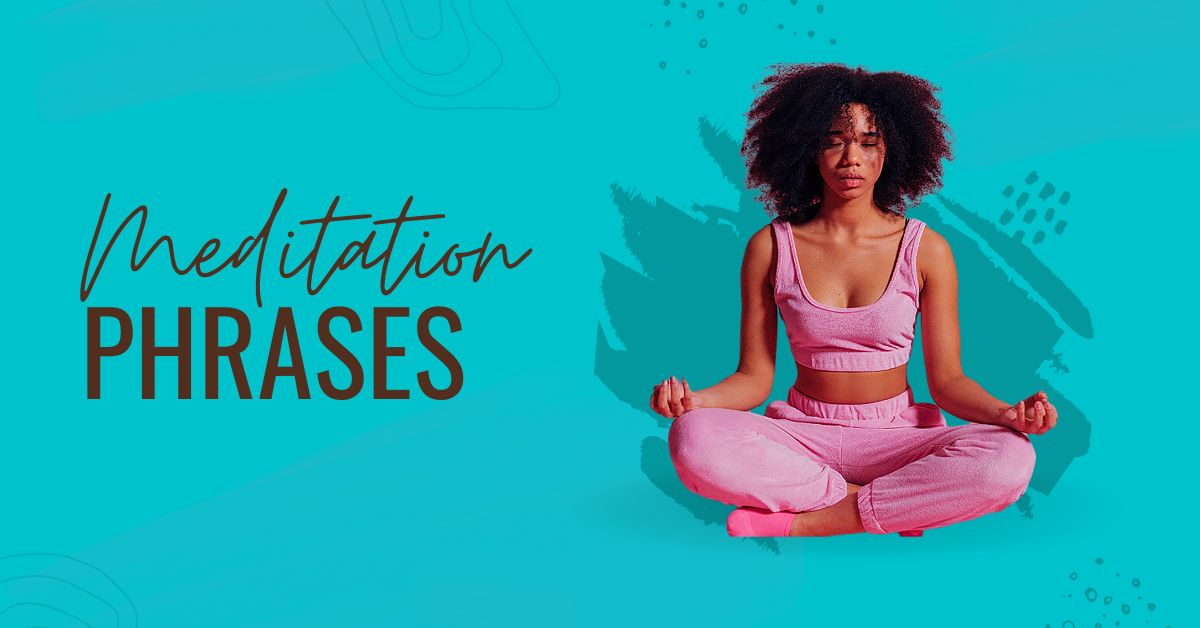Meditation has become a universal practice. If you, like many others, have gained an interest in meditation and are learning more about it, there’s a good chance that you’ve come across words or terms you don’t understand.
In this guide, we hope to bring some clarity by defining some of the most common meditation words.
Meditation Mantras

Many people recite mantras when they meditate. These meditation words can serve a variety of purposes. They can help you stay focused, making it easier to get into a meditative state. They can also be used to promote relaxation, alleviate stress and cultivate a more positive mindset.
Here are some example mantras:
- I allow myself to rest
- Om Shanti, Shanti, Shanti (Means: Peace of body, mind and speech)
- Om (the most sacred mantra)
- Aham Prema (Means: I am Divine Love)
- I am that I am
- I am enough
- All that I need is within me
- I am fulfilled
- I am fearless
These are just a few of the many mantras used in meditation.

Mindfulness Meditation Words
When practicing mindfulness meditation, you may come across several terms that you are unfamiliar with, including:
Five Hindrances
Refers to the hindrances that can prevent you from reaching enlightenment or nirvana. They include:
- Aversion
- Attraction
- Restlessness
- Sluggishness (mentally)
- Doubt
Six Sense Doors
The six senses in which the mind is aware of to make sense of the world. These include:
- Nose: Smells
- Eye: Sights
- Body: Touch
- Tongue: Taste
- Ear: Sounds
- Mind: Mental experiences
Anapanasati
The practice of mindful breathing in and out. Ana pana means “in-out” and sati means “mindfulness.”
Four Noble Truths
The essence of the Buddha’s teachings. These are four things that the noble or enlightened ones understand.
- Dukka (which means suffering) exists.
- The truth of the cause of suffering.
- The truth of the end of suffering.
- The truth of the path to take to end suffering.
Samadhi
Refers to the unification of attention; a state of intense concentration.
Four Satipatthana
These are the four foundations of mindfulness:
- Mindfulness of the body
- Mindfulness of feeling tones
- Mindfulness of mental states
- Mindfulness of dhammas

Buddhist Meditation Chant Words
There are many Buddhist meditation chant words and phrases, which include (but are not limited to):
Namo Tassa Bhagavato Arahato Samma Sambuddhassa
Meaning: I honor the blessed one, who is fully enlightened and the only one.
A mantra that pays homage to Buddha to help them perform good deeds and gain enlightenment.
Nam Myoho Renge Kyo
Meaning: Devotion of our mind and body.
A powerful mantra that encourages us to surrender ourselves to divine power. It can be used to give us the strength to face challenges.
Om Tare Tuttare Ture Svaha
Meaning: Honors White Tara, which is depicted as having seven eyes and sitting cross-legged.
White Tara is associated with long life, and this chant is often recited with a certain person in mind.
Gate Gate Para Gate Parasam Gate Bodhi Svaha
Meaning: Going, going, always going beyond and always becoming Buddha.
This chant is also known as the “Heart Sutra,” and it is recited to help the practitioner gain clarity in their spiritual life.

Meditation Phrases
There are many terms or phrases related to meditation that either describe different practices or outcomes and effects of the practice. Some of the most common meditation words in this category are:
Transcendental Meditation
A silent mantra meditation promoted by the Transcendental Meditation movement. The practice is believed to create a relaxed state of awareness and reduce stress to reach a higher state of consciousness.
This form of meditation is practiced for 15-20 minutes twice per day. It is amongst the most widely practiced and widely researched forms of meditation.
Conscious Awareness
Refers to the state of being awake and aware of your surroundings.
Eightfold Path
The path to nirvana, or enlightenment. The eightfold path includes right:
- Views
- Speech
- Livelihood
- Intention
- Action
- Mindfulness
- Effort
- Concentration
Reflection
The practice of engaging the mind. In meditation, the goal is to empty and clear the mind. Reflection is all about thinking about challenges, goals, decisions and life experiences.
Zen
A school of Mahayana Buddhism that focuses on the attainment of enlightenment. Those who follow this school practice the zazen meditation technique, and it requires the help of an accomplished and experienced teacher.
Enlightenment
To attain full awakening; to reach nirvana and become a Buddha.
Chakra
Refers to the seven energy points on the body. The word “chakra” itself translates to wheel or cycle. There are seven chakras that run along the spine and affect areas of your health, behavior and mental health.
Dharma
Sometimes called cosmic law and regarded as right behavior. Dharma is a universal truth that is common to all individuals.
Kundalini
Refers to the “coiled” energy that sits at the base of your spine. Meditation can help awaken and release kundalini energy.
Mantra
Mantras are words or phrases chanted and focused on during meditation. They may be said out loud or internally.
Bandhan
A practice that is performed after a meditation session to help rebalance energy channels. Bandhans are often performed after kundalini is elevated.
Metta
Also known as Maitri, which means lovingkindness.
Mudra
Refers to the hand positions used in meditation. There are a variety of mudras, and each one has its own meaning.
Nirvana
It is said that a person achieves nirvana when their mind is at peace and impervious to worldly temptations. Nirvana is sometimes referred to as enlightenment.
Aura
Refers to the energy field surrounding a person. Auras are typically perceived as colors. Common interpretations of these colors are:
- Purple: Spiritual awareness, higher consciousness
- Indigo: Insight, wisdom, spirituality
- Blue: Self-expression, intuition
- Green: Healing, service, love of nature, responsibility
- Yellow: Laughter, optimism, creativity
- Orange: Excitement, thrill-seeker, confidence
- Red: Passion, strength, determination

Meditation Technique Words
There are many terms used when talking about meditation, including:
Breath Control
In meditation, breath control is often referred to as breath work. It can involve a variety of breathing techniques, including deep breathing, pranayama, circular breathing and more.
Mala
A common term used in meditation refers to a string of 108 beads. These beads are used by Buddhist monks in meditation and chanting. A mantra is recited for each bead.
Feedback Method
A meditation method that uses light signals to help you stay focused and attentive.
Dharana
The practice of concentrating your mind on a single point and maintaining your concentration for as long as possible. Dharana can help improve your focus.
Trataka
A meditative practice known as “yogic gazing.” The practice involves focusing on an object and trying to visualize it with your eyes closed.
Laya Yoga
A meditation practice that aims to raise kundalini through chants, meditation, yoga asanas (postures) and pranayama (breath practices).
Lotus Position
The famous cross-legged position commonly seen in Hindu meditation practices.
Bhramari
A breathing meditation technique (pranayama) that involves restricting your breathing after partially covering your eyes, ears and nose with your fingers. Bhramari is a popular technique that is known for its healing effects.
Rene is a creative, little gnome. When she's not diving deep into research on health and wellness, she's spending here time out in nature, growing her homestead, photographing wildlife, doing yoga or enjoying a zen (depending on the day) moment with her fur babies. And on top of all of that, she's a professional writer by day, helping businesses around the world grow.

